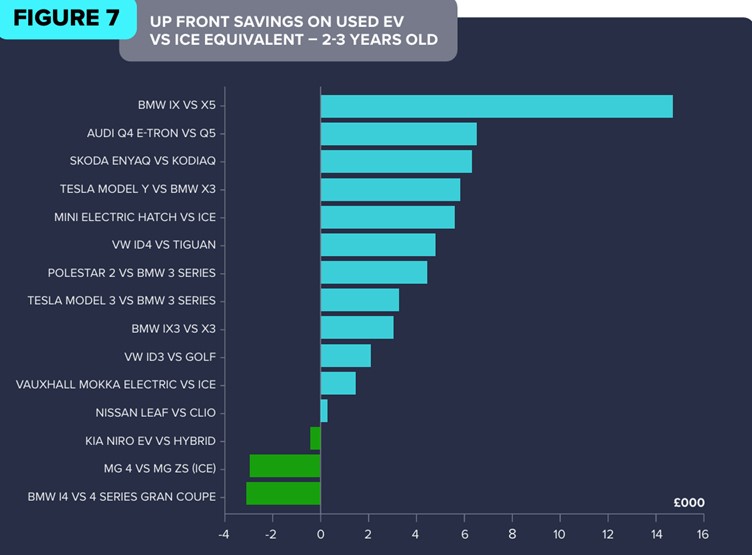Exposing coastal Greenland, efficiency proven – again – and avoiding public chargers
In this issue:
Coastline laid bare
Shrinking glaciers in the Arctic over the first 20 years of this century have exposed 2,500Km of otherwise covered coastline and 35 islands. In that time, 85% of glaciers have retreated, exposing an average 123Km of new coastline per year. The newly revealed coastline is less stable than normal and more susceptible to landslides, increasing tsunami risks. Two thirds of the exposure is witnessed in Greenland.
Energy efficiency saves millions
Participants in the Climate Group’s EP100 programme report aggregated savings of US$164m (NZ$284m) over the last year with average energy productivity improvements of 8%, the global improvement rate is around 1%. The programme currently has 113 members, who employ over 2.8m people and have an annual aggregated turnover of nearly US$600bn (NZ$1,040bn). Since the initiative began in 2016, members have saved US$1.7bn (NZ$3bn) and reduced emissions by 450 million tonnes, which is more than the total annual emissions of Brazil in 2023.
Those who commit, succeed
The Climate Group has also just reported progress on its EV100 initiative. This programme has 130 members, including famous names like Barclays, Deloitte and AstraZeneca, with an aggregate fleet of 2.93m light vehicles. Despite supply chain challenges in recent years, companies are reporting good progress towards their target of 100% electric fleets, with 700,000 vehicles across the fleets now being electric. The companies have installed nearly 30,000 charging points across 4,277 locations. A sub-group focused on heavier vehicles reports 400 electric trucks have now been deployed.
40% of global GDP at risk from climate change
That’s the conclusion of a new analysis by UNSW researchers, who suggest a 3C temperature increase could wipe out two fifths of the world’s GDP. They argue previous analyses are flawed in that they ordinarily estimate national impacts resulting from national weather changes. Of course, climate change is global and in a global economy the real impact will be severely compounded. Some previous studies have suggested some regions, such as Russia and Northern Europe, could benefit from climate change. This study indicates the negative global impact will outweigh any local economic benefit with these areas suffering a net negative impact as well. Weather is identified as the main risk with extreme weather events and heat being the biggest influences.
But GDP falls – or growth - are our choice
A sneak peek at preliminary results from a major analysis by the OECD and UNDP reinforces the need to address climate change to protect – and even enhance – economic prosperity. The report concludes addressing climate change will not come at a net cost but will actually improve prosperity. The report predicts sticking to a 1.5C temperature increase will deliver a net positive impact of a modest 0.23% of GDP by 2040 but with enormous increases thereafter. Advanced economies will see a gain of 60% in per capita GDP from 2025 levels by 2050, with lower-income nations experiencing a 124% increase. In the short term, developing countries would see 175 million people lifted out of poverty by 2030. The alternative of doing nothing will see a fall in GDP of 33% by the end of the century, according to the report.
Stadium planning for the future
In the week Auckland Council came out in favour of redeveloping Eden Park instead of building a new stadium, Chinese PV manufacturer JA Solar was announced as the PV partner for the upgrading of Borussia Dortmund’s Signal Iduna Park. First announced last year, the upgrade will see the stadium’s roof delivering 4GWh of electricity a year from 11,000 panels, reducing the soccer club’s emissions by 1,800 tonnes of CO2e a year and feeding power into the local grid to boost resilience. The installation will be the biggest of its kind in the world. I heard no mention this week of solar panels on Eden Park’s new retractable roof or those of the main stands. Are we missing a trick?
Avoiding expensive public chargers
While smart product packaging is allowing certain New Zealand drivers to avoid paying high charging rates at public terminals already, there is now an alternative to those high rates for everyone else, which also reduces concerns about being stranded – at least in daytime. GoSun is marketing a mobile charger that sits on top of the vehicle like a roof rack but folds out to provide a boost. One assumes in the American market it will carry a warning not to use it while driving! The capacity doesn’t really substitute for a proper charge but GoSun claims the 1,100 watt device will provide enough power over a day to cover around 30Kms. Units are being sold for US$2,999 (NZ$5,200).
Electric bike ban
Transport for London has just announced a ban on carrying electric bikes on all TfL trains and tubes, citing the risk of fire. E-bikes are already banned on buses and trams for the same reason. Strangely, the bans apply to non-folding e-bikes only, the logic being folding bikes have not, so far, caused any fires. Quite how the technology differs remains a mystery, but it seems TfL is drawing causal conclusions from correlations to the benefit of people with folding bikes.
Did you know ……..
In the UK, used EVs are now cheaper to buy than ICE equivalents? EVUK has recently published a comprehensive report on the cost of running EVs covering, purchase, operating costs and insurance. While the conclusion that lifetime costs for EVs are lower will be no surprise, one of the factors holding back adoption has always been purchase costs relative to ICE vehicles. The finding that purchase costs of used EVs are now lower than their ICE equivalents in most cases marks a major milestone in the transition to low emissions motoring. NB, while the chart shows a comparison for vehicles between 2 and 4 years old, the same pattern was found for older vehicles.


